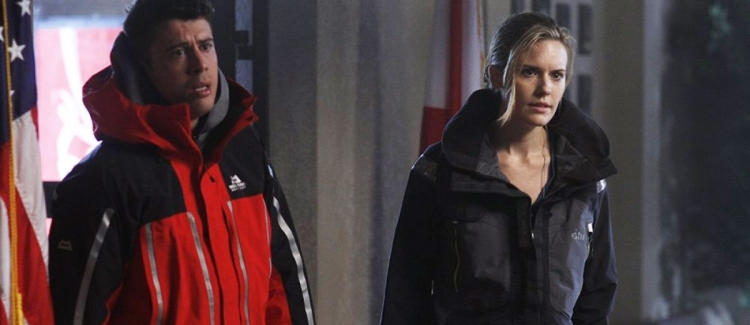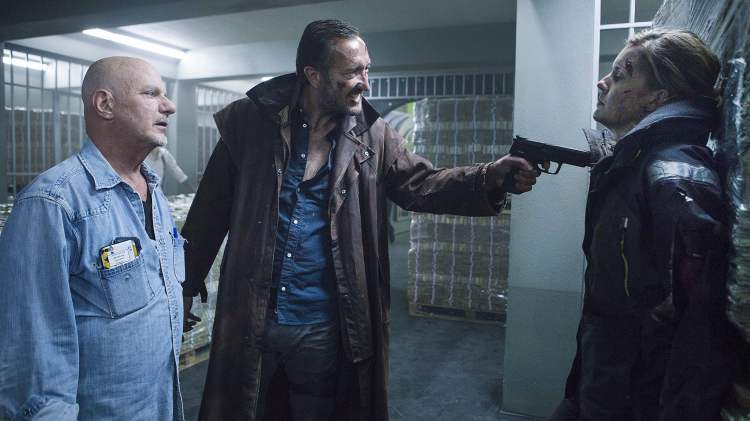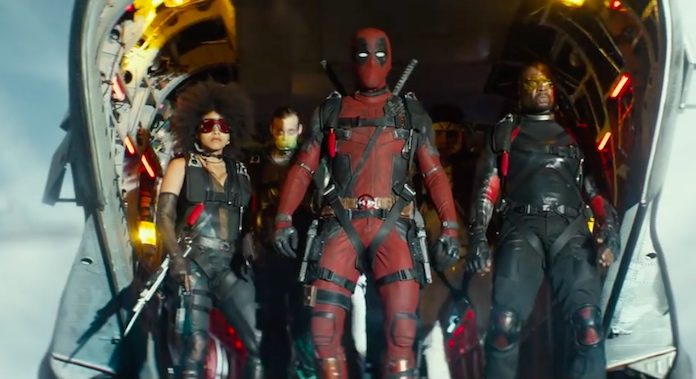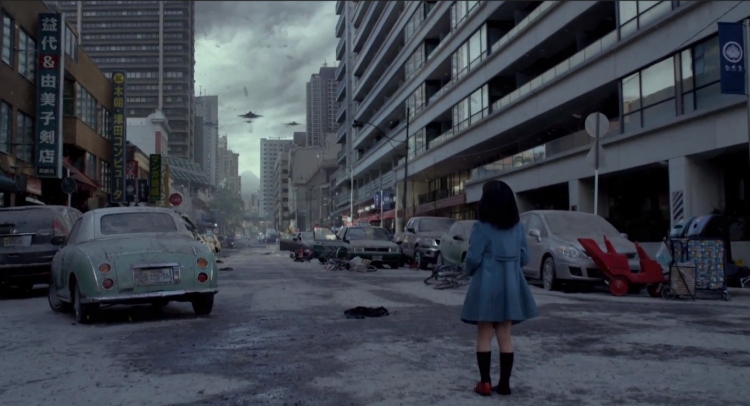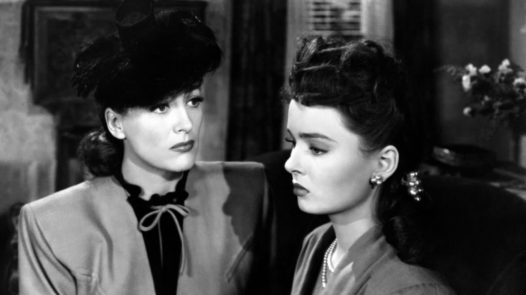
Discussing the highest-grossing film of 2017 six months after its release hits that sweet spot where I can just about open up with a SPOILER WARNING without worrying much about that turning away readers that weren’t already going to be turned away, yet on the other hand… I also have to reckon that almost anything I have to say about Star Wars: The Last Jedi has already been addressed, usually by better writers than I (for that is a long list). And yet the extreme responses on both sides to the film make one feel like a man without a country.
I mean, I am not neutral on the film: after watching it twice, I’ve settled on “I didn’t like it”. So I’m not onboard with the critical adoration stating it’s the best Star Wars movie of all time or since The Empire Strikes Back. And yet there’s a significant amount of criticisms towards The Last Jedi that I frankly don’t align with, even ignoring the ones I refuse to dignify involving the term “Social Justice Warrior” or complaining about the inclusion of anti-war politics, people of color, and women in significant roles. At worst, I think it’s on the same middling-to-mediocre level that every Star Wars release since 1999’s The Phantom Menace, so it’s not like I find “worst Star Wars movie” to apply to it either.
But The Last Jedi does land a lot of superlatives in my book, with the most gnawing one being the clunkiest narrative of a franchise that’s never been an exemplar of thematic depth and structural competence. Honestly, many of the criticisms regarding director/writer Rian Johnson’s screenplay are not really unique to The Last Jedi. Its unwieldy lack of balance with plotlines (essentially three but they mesh throughout) is definitely something already messed up by 2002’s much worse Attack of the Clones and its snail-in-a-black-hole pacing that leads to nowhere for an entire hour is something shared by the first two entries of the prequel trilogy. And yet, here I am finding it a lot more bothersome on three factors: Johnson’s normally a phenomenal writer and this is uncharacteristically clumsy of him, the movie is the longest in the franchise at a whopping 152 minutes, and it stresses that length by having its best elements bookended and the fairly good moments in the middle interrupted by a large chunks of bad.
The film starts on a great note with an incredible war thriller mini-movie starring Veronica Ngo about her duties as a Resistance gunner while her allies escape a First Order ambush, led by the plucky fighter pilot Poe Dameron (Oscar Isaac). It’s cut right with outright urgency by Bob Ducsay as we witness slow bomber after slow bomber destroyed in the desperate hope of taking down a Dreadnought from the point of view of Ngo’s Paige, cramped and determined in an explosive setpiece. It’s a bit overreliant on turning Star Wars battles into World War II battles with complete disregard to space physics (I mean, these bombs are DROPPED into the vaccuum of space and Ngo stands next to the open door), but it’s bombastic exciting opening spectacle.

We cut to the remote island planet of Ahch-To, where we last left Rey (Daisy Ridley) attempting to appeal to self-exiled Jedi Master Luke Skywalker (Mark Hamill) to teach of her developing Force powers. Luke, however, has grown bitter and resentful of the Force and the Jedi way of life in consideration of how his student Ben “Kylo Ren” Solo (Adam Driver) has gone off the deep end and demands to be left alone in his misanthropic state. And herein, the story boils very efficiently: eventually Rey – with the help with the familiar pair of ol’ Wookie Chewbacca (Joonas Suotamo, officially taking over from Peter Mayhew) and chirpy astromech droid R2-D2 (Jimmy Vee) – is able to break Luke down to give reluctant and cynical lessons on how to focus her power. However, doubts fueled by Ren and desires in Rey’s heart to discover the truth behind her origins threaten to derail her journey inward and give her answers she won’t like. Which is why this happens to be the area in which the film is the richest in character drama and development.
It’s been a popular method of detractors to cite Mark Hamill’s resentment for developing Luke as a sullen old man, ignoring that he’s rolled back on his comments, but honestly I can’t pretend I agree. It makes a whole lot more narrative sense than anything else in The Last Jedi and Hamill takes that spot to facilitate a lot of growth Luke surprises himself with when Rey breaks into his life. And Rey remains the most dynamic character to emerge from the sequel trilogy, with Ridley herself having to drive Rey’s arcs and respond to some very empty, disappointing truths about herself before using them as a launchpad for an inspiring arc of self-realization. This happens to be the moment where all of the curveballs in Johnson’s script stick, like the revelation of Rey’s parentage and the usage of evil Supreme Leader Snoke (Andy Serkis in his MO mo-cap), but I’ll get to the criticism of the rest later.
Meanwhile, there’s the other plotlines, originally starting as just one: The First Order Dreadnought Supremacy is sadistically stalking the desperate evading Resistance forces, with the shocking capability to follow their main cruiser at light speed and make massive dents in Resistance defenses. It gets intense enough to incapacitate General Leia Organa (Carrie Fisher) and command is now assumed by Vice Admiral Amilyn Holdo (Laura Dern). Holdo’s refusal to share her plans to the recently-demoted Poe leads to an extended hissy-fit-turned-mutiny that is a lot less self-aware than it receives credit for. There’s no nicer way of saying this: this plotline and the subsequent split it makes for a secret mission of ex-storm trooper Finn (John Boyega) and the Resistance technician sister to Ngo’s Paige named Rose (Kelly Marie Tran) dangerous regresses nearly every character involved into a complete buffoon. The characters make decisions that end up circling the whole narrative back to the same spot an hour of character action later, even well before their floundering leads to results Leia stressed they CANNOT afford but has little affect on Poe, Finn, or Rose’s development. Finn especially goes through the exact same motivational beats he already had gone through in The Force Awakens with extra stress on turning him into a physical clown of a deserter, but all of the heroes* cast here are doing the best they can with disastrous material and barely selling fuck-ups as the actions of believable human beings in distress (in general, I think Dern outdoes Hamill as the second-best performance in the film behind Ngo and Tran has been receiving a frankly mean-spirited amount of vitriol she wouldn’t deserve even if her performance wasn’t the singular source of dedicated humane energy that it is). It just doesn’t stop the frustrating lack of thrust in a story that has too much time not to fill it up.

And that’s ignoring the inorganic way the movie halts to directly criticize war profiteering, a clunky but noble move often mistaken as deeming The Last Jedi an anti-war film which fits it about as well as Iron Man, a film that only seems to be against the bad guys having weapons. Star Wars is a Manichean environment produced by a company pretty spooked at the idea of challenging narrative norms. Moral complexity is alien to it and it’s a miracle that Luke Skywalker as a character accomplishes this, but nothing else in The Last Jedi facilitates this. Poe is rewarded for decisions that lead to a massive amount of lives lost by being promoted at the very end of this movie with Holdo, the very woman who Poe held at gunpoint after trashing her bridge, happily declaring she likes him because he’s feisty. Y’know, because he’s the good guy so that he commit such indisputable travesties. Or how about the fact that shortly after all these bodies occurred, Rose nearly kills Finn and herself in the aborting of a suicidal attack against The First Order and responds to this by saying they will win this war by “Saving the ones we love”, punctuated by her kissing Finn** while a Hitchcockian laser explosion occurs that totally added to the body count. That’s a wild misfire for a movie that is deemed anti-war.
In Johnson’s writing, there ARE fundamentally daring and engaging narrative decisions where the common criticism from the public is that they happened, while my big problem is that they were rolled back. The most notorious instance of this happens to be the apparent death and subsequent resurrection of Leia, a move that feels sincere in the wake of Fisher’s shocking death but existed before her passing and indicates an unwillingness on the part of this new trilogy to move past the legacy of the original. Or the constant feints The Last Jedi makes to affiliations and allegiances being subverted, only to return by the end of the movie to a distinct line between good guys and bad guys. Johnson’s never indicated the remotest dissatisfaction with the development of The Last Jedi and I’m sure he’s happy to have a chance of shaking things up for the duration of the movie, but all the “fake out!” resets feel like the result of the powers-that-be at LucasFilm stating “well, you have to put it right back when the movie’s over” with an Marvel-esque fidelity to their plans for Star Wars Episode IX. It makes the film feel safer than it should.
Now, I’ve long upheld that Star Wars is not an event you go to for the writing and I maintain that in this instance. In fact, some of the other elements are why I can’t damn it as hard as so many detractors seem to.
For instance, it is the best-looking Star Wars movie since The Empire Strikes Back. It’s evident that Johnson brought his love of anime into Steve Yedlin’s cinematography with a finger on instant iconography like a character standing off against a First Order grand armada like a splash page imagined by Ralph McQuarrie or a steaming gnarled wreck of a black helmet in a glowing elevator. This movie crazy inventive with red as both an sleight-of-hand replacement for viscera (one scene halfway through the movie uses a red costume’s tatters to replace the gore of the character’s evisceration, another uses the salt-coated red surface of a planet to imply a character’s eruption and later a post-slice blood splatter) as well as just an excitably pure backdrop for the passion of battle – particularly one of the greatest lightsaber battles of the whole franchise, so many combatants cutting through a dome of bright crimson burning down to reveal the abyss of space while dealing with the space version of the armor from Bram Stoker’s Dracula.

And those reds aren’t even the main showcase of production designer Rick Heinrichs and costumer Michael Kaplan. It’s actually an element of the Finn/Rose mission: the Monaco-inspired casino planet Canto Bight is one of the better elements of world-building since The Phantom Menace, various in eye-catching colors and creature designs and shimmering in an off-puttingly perfect way making it easy to understand why Finn is so easily dazzled and giving a full gap to the class lines Rose remarks upon to give the sudden politics enough heft. Or the salt planet of Crait, inventively straddling the line between desert heat and winter whites to give a relentlessly wild atmosphere for The Last Jedi‘s climax.
There is a caveat to that “Best Looking” title and it’s a significant one that hampers one of the reasons I go to a Star Wars movie in the first place: The effects are at an all-time worst. Which leaves enough room for dazzling setpieces like the opening escape, the throne room battle, the Canto Bight scene, or a moment of rapid black-and-white impact where Johnson is so proud of the imagery that he shuts off the sound for 10 seconds (you could heard the whole crowd go “whoa!” at my IMAX). But then there’s also the reminder that Snoke is the worst motion-captured character Andy Serkis has ever done, an extended setpiece involving very cartoonish animals rampaging through a planet, and Leia’s revelation as a force-user swinging back to the ship and they’re mighty worse than either of Rogue One‘s grave-robbery, largely because these effects involving living tissue as well that’s always in movement (where Rogue One‘s Tarkin and Leia occasionally were not moving) and pulls the effects further into looking like video game cutscenes. The practical effects are all fine as they always are and Star Wars otherwise still remains as competent in their effects work as an given blockbuster, but man those particular instances stick in my craw.
As does the growing dissatisfaction with John Williams’ returning as a composer for this trilogy. His cues for The Last Jedi don’t hit the depths of The Force Awakens – indeed he seems a lot more awake here, especially on Canto Bight – but his music just doesn’t seem like much more than him doing an imitation of himself this time around. And this is probably the killing blow for me: I specifically go to Star Wars for Williams’ music above anything else. His motifs don’t salvage horrible movies (“Across the Stars” is among his best and that’s from Attack of the Clones), but if his music doesn’t seem to be having fun, I’m not gonna be having fun. And the music doesn’t sound like he’s been having fun since Revenge of the Sith.
My attitude is clear: there are elements I like in The Last Jedi, but I am dismayed by the packaging. There are ideas I admire in The Last Jedi, but I find ruined by the execution. The Last Jedi is not a worthless film, in fact I think it’s quite interesting enough to understand why its supporters are so very devoted to the film. It’s a giant contradiction in a fascinating way that begs re-evaluation someday on my part, much as The Phantom Menace and Return of the Jedi found. But not any time soon, sadly – partly because the goliath amount of time wasted does not entice me to rewatch it soon***, partly because watching it a second time with the intent on focusing on the good has only led to me finding more bad and it felt even more like a missed opportunity. Ah well, not everything has to be black and white. I can sit right in the middle of my island and stay out of the fight that Star Wars: The Last Jedi has started.
*I’m specifying “heroes” because the villains are much much worse than they already were in The Force Awakens. Domnhall Gleeson as General Hux is doing a dumber version of Ben Mendehlson’s flustering functionary work in Rogue One, Driver is tethered to the most predictable storyline Kylo Ren could have been saddled with, and Serkis is still doing nothing. I don’t want to add more problems to this review and I kind of don’t care enough about the characters to even be appalled at their treatment like I am with Finn, Rose, Poe, and Holdo, so they get a footnote and not an actual place in the review.
**They ruined Poe/Finn! Goddammit! Of course that was never canon, but the possibility of the first explicit non-heteronormative relationship in a Star Wars, erased just like that!
***There’s legend of a “fan” cut removing the women from the film which is not only sexist as fuck but wildly misses that all the best parts are starring the women. My fan cut would not remove a single millimeter of Rey or Paige’s storyline, though it would be quite liberal with the rest.













